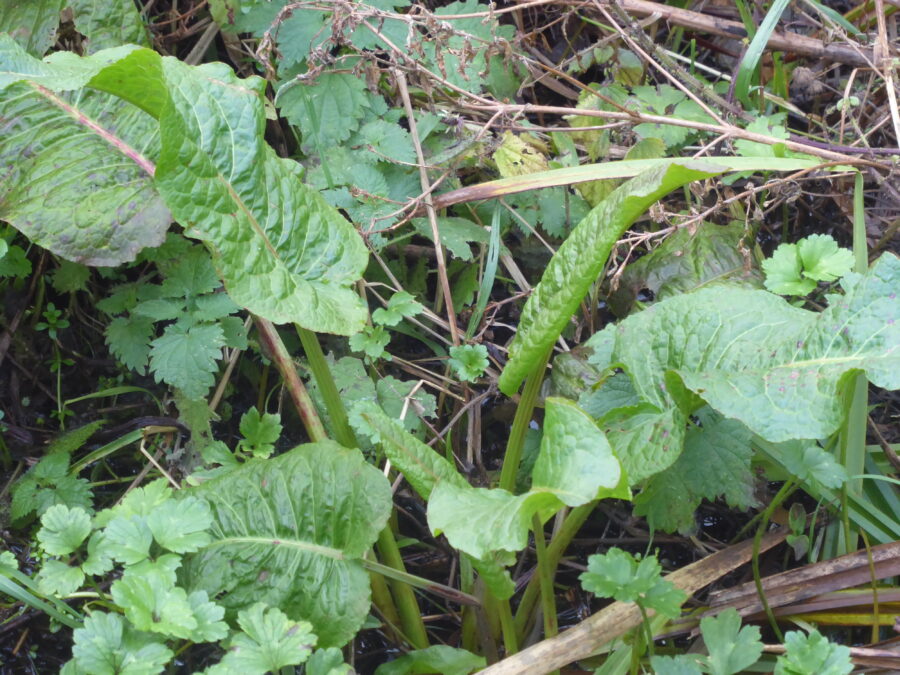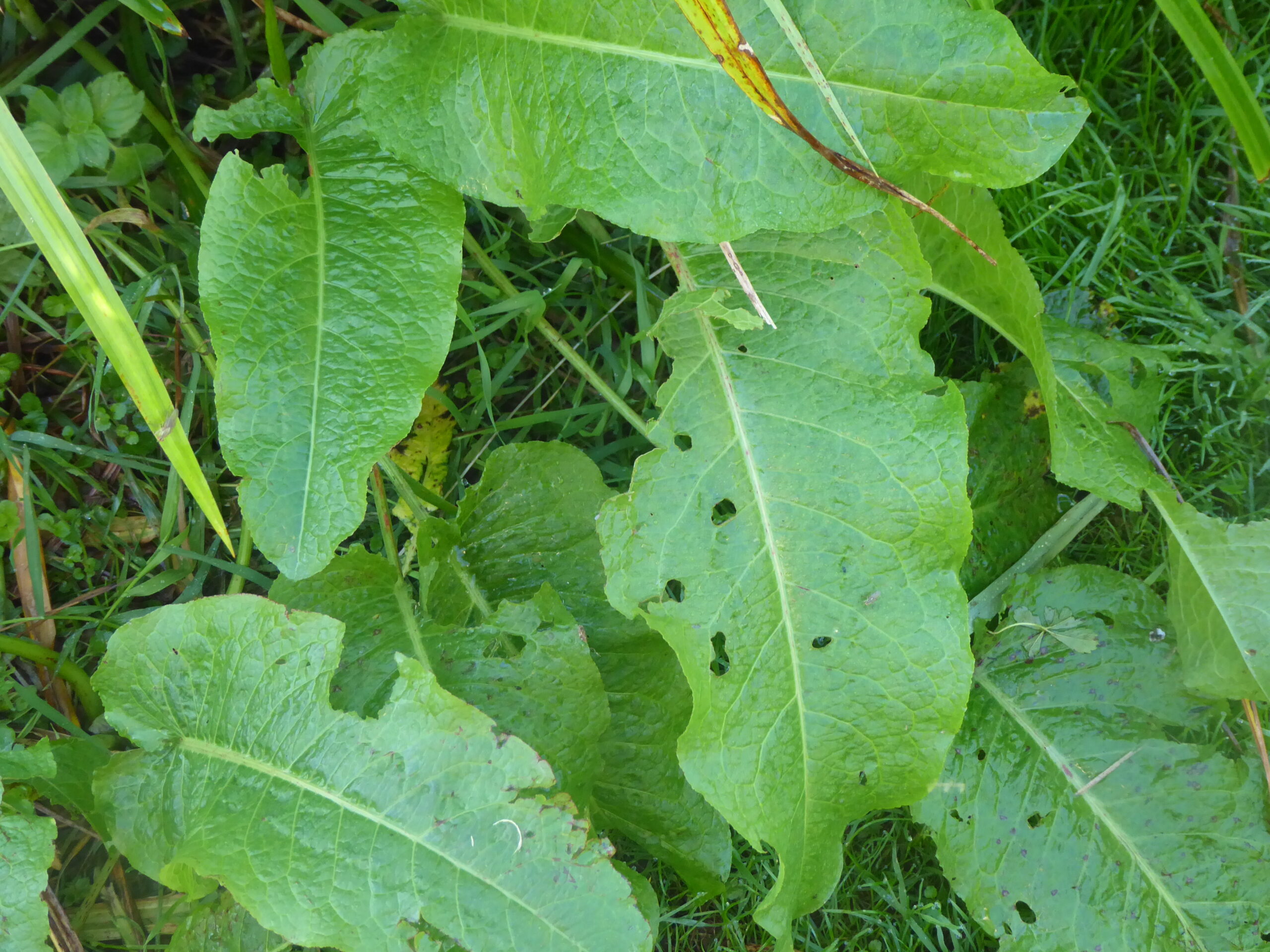The broad-leaved dock can be found in a variety of habitats – gardens, roadsides, and farmyards. Clearly it doesn’t mind damp conditions as it is still flourishing in the flooded watermeadow. It has large, long-stalked leaves and tall spikes of flower, turning into seedheads, which are slow to keel over. It is a perennial, so that is why it is still lush and green in December. Dock is a prolific disperser of seeds and has a tap root (a thick main root, like a carrot) which can be up to 3ft long. For these reasons it is hard to eradicate and is classed as a pest by serious gardeners. However, it supports a number of species – butterflies, moths, beetles, and bugs – in particular, we have become acquainted with dock bugs over the summer, which is no bad thing.
Given the number of nettles in our watermeadow it is not surprising that we also have dock, as the two plants often grow near each other. Dock is well-known for its ability to soothe nettle stings and, in fact, insect stings and bites, as well as sprains, soreness and scalds. Dock is edible and can be cooked and served as an alternative to spinach.

